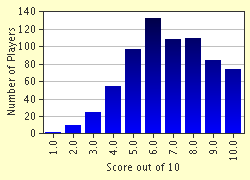Quiz Answer Key and Fun Facts
1. Two languages, A and B, are said to be mutually intelligible if a native speaker of A can understand most of what a native speaker of B says, and vice versa, with no special training outside of their native language. For instance, Spanish and Portuguese are considered to be mutually intelligible, but Italian and German are not. Which of these languages is mutually intelligible with English?
2. English is a member of the language family known as Germanic languages. What is the closest linguistic relative to modern English?
3. Which of the Indo-European languages below is still being learned as a native language in the 21st century? (That is, it is used for daily conversation, not just studied and used on certain occasions.)
4. Romany, the language of the Rom people or Gypsies, is most closely related to which of these modern languages?
5. Finnish is not an Indo-European language. True or False?
6. Hungarian is related most closely to which of the following languages?
7. Of the following Indo-European language families, which of the following has NO modern living descendant?
8. For the last three questions, I will give the name of a language group. Of the choices given, pick the language that does NOT belong in the group.
Which of the following does NOT belong to the Germanic language group?
9. Which of the following does NOT belong to the Slavic language group?
10. Which of the following languages does NOT belong to the Celtic language group?
Source: Author
inquizitive
This quiz was reviewed by FunTrivia editor
agony before going online.
Any errors found in FunTrivia content are routinely corrected through our feedback system.


